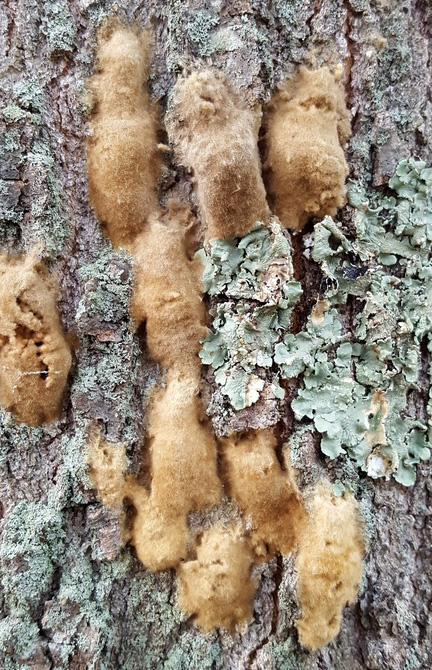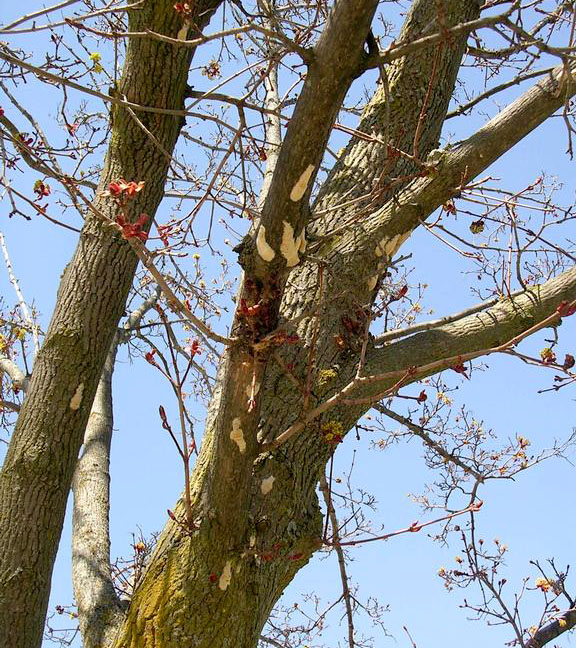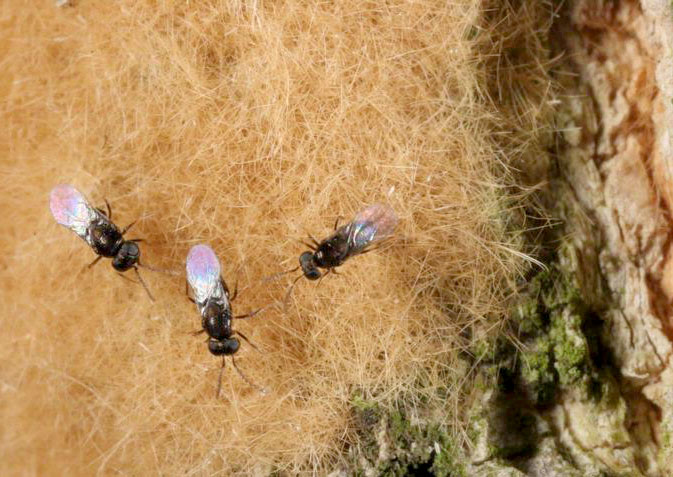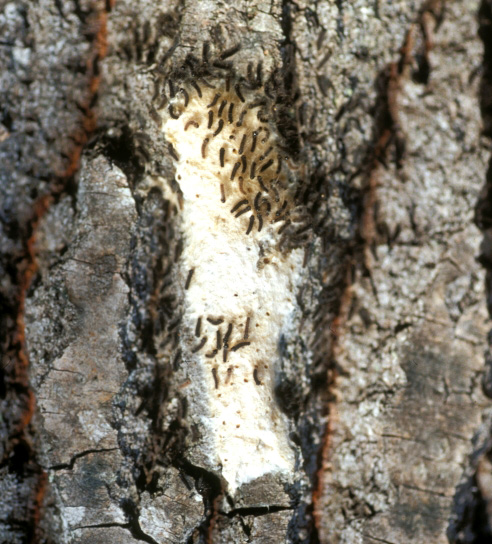Surveying Spongy Moth Egg Masses to Forecast Next Year’s Population
April 27, 2022 - Deborah McCullough

Surveying spongy moth (Lymantria dispar, formerly gypsy moth) egg masses, which are present for nine to 10 months every year, provides a means for pest managers to estimate how high a spongy moth population is likely to be the following year. Pest managers can use egg mass density to predict whether larvae (caterpillars) will be abundant enough to cause serious defoliation and annoy residents.
View the MSU Enviroweather Spongy Moth Egg Hatch Prediction Model
Estimating densities of spongy moth populations is typically based on counts of egg masses in circular plots with a specific radius. Plots are usually established in residential areas where oaks, aspens or other highly preferred host trees are abundant. A plot with a radius of 18 feet, 7 inches yields an area equal to 1/40 of an acre. Multiplying the number of egg masses within the plot by 40 generates an estimate of egg masses per acre. Typically, when there are more than 200 to 250 egg masses per acre, there is likely to be moderate to heavy defoliation the following summer. Obviously, the more plots, the better the estimate. Compiling and mapping egg mass data from across an area can help indicate hot spots where spongy moth activity is likely to affect people next year.

Egg mass size can also be helpful. If most egg masses in an area are small (about the size of a quarter), it means the female moths were not very healthy. This can occur during outbreak years when defoliation is high and foliage for larval feeding becomes scarce. It can also mean many female moths were affected by a pathogens, such the spongy moth virus (nucleopolyhedrosis virus, or NPV). When a high proportion of egg masses are small, it generally means the spongy moth population is decreasing. In contrast, if egg masses are abundant and relatively large, there will likely be a high density population and heavy defoliation next summer.
Egg masses can be scraped off trees or other items into a container with soapy water, which will kill the eggs. Note that if you simply scrape the egg masses onto the ground, many eggs will still be able to hatch next spring.
Egg masses can be sprayed with horticultural oil (e.g., Sunspray oil), which suffocates the eggs. Although reducing the number of egg masses may decrease the number of larvae feeding on individual trees, it will have little effect on the overall spongy moth population in your area. Wait until late fall or winter if you plan to scrape or spray egg masses with horticultural oil. There are tiny parasitoid wasps [Ooencyrtus kuvanae (Howard)] that develop in spongy moth eggs during the summer and fall. Waiting until November ensures these beneficial natural enemies of spongy moth have time to complete their life cycle. Their offspring will help control spongy moth next year.





 Print
Print Email
Email





